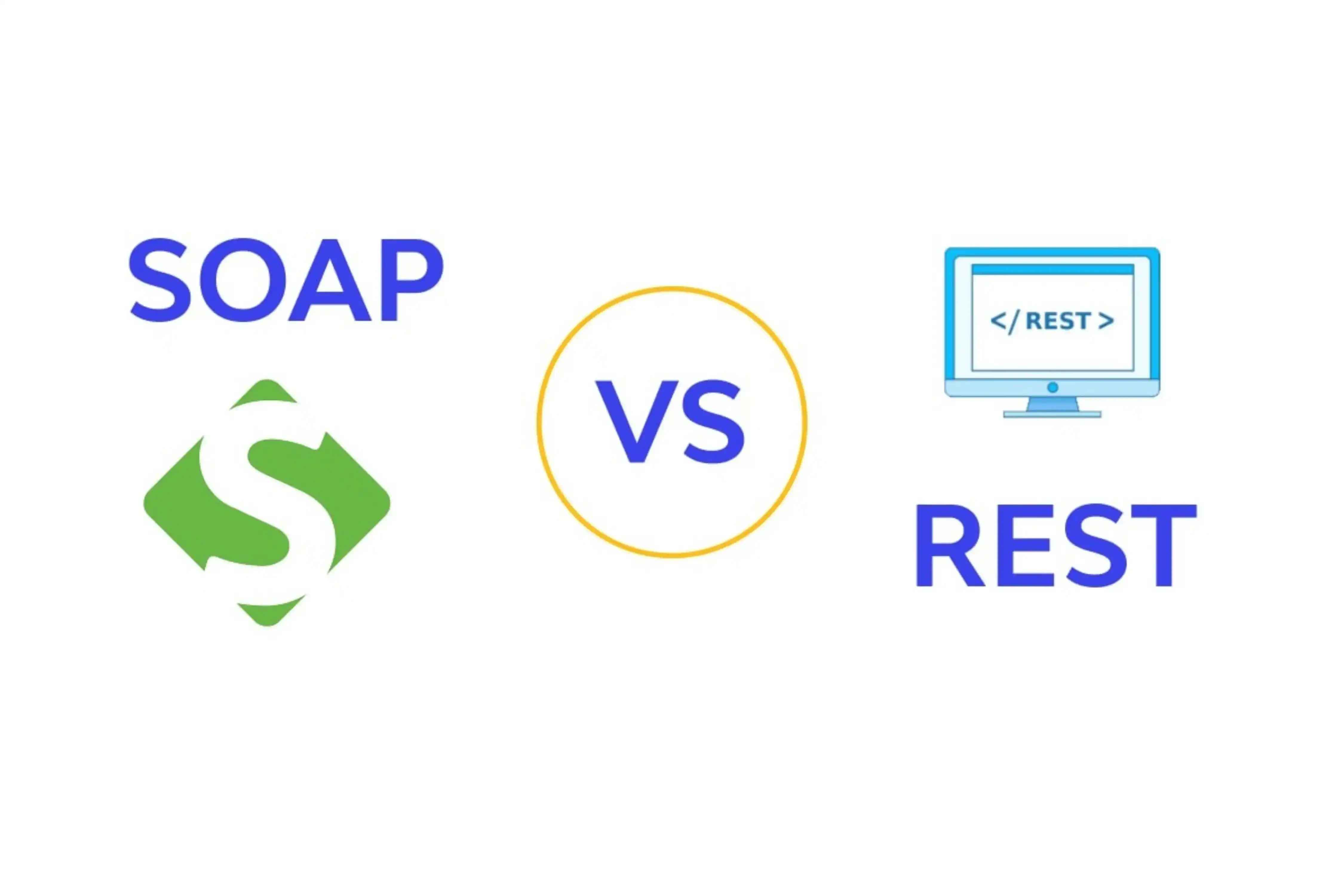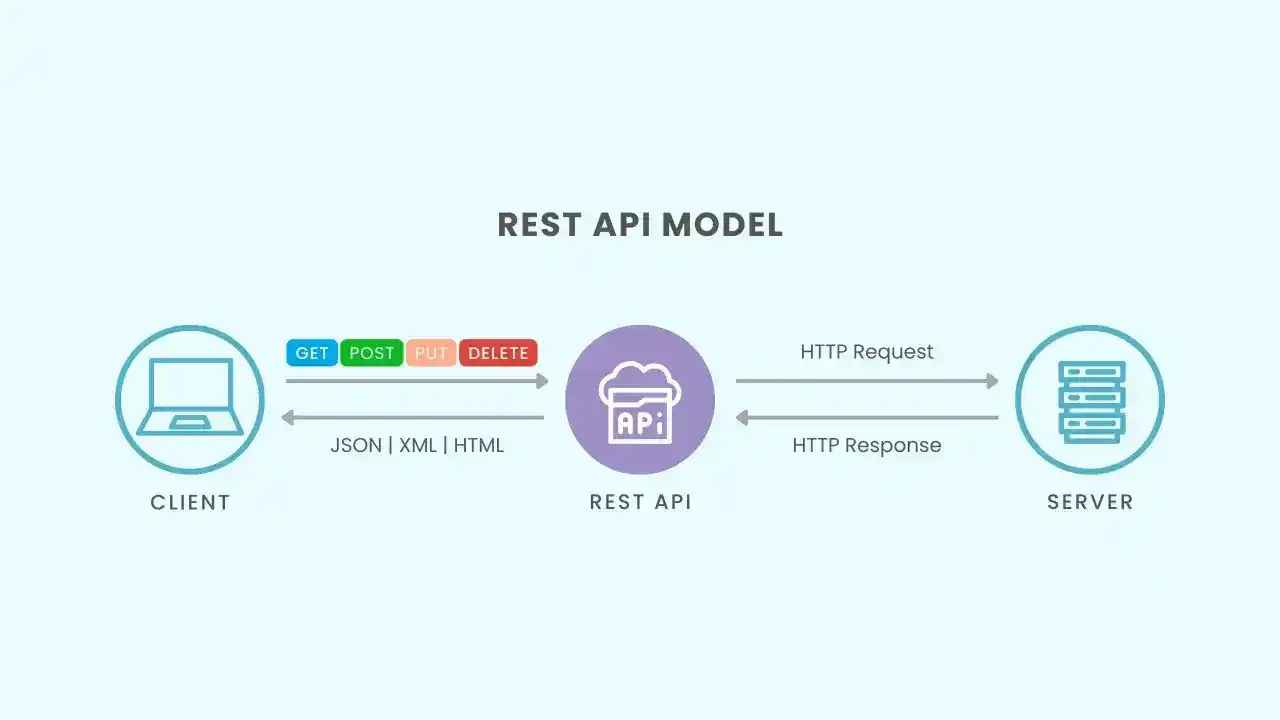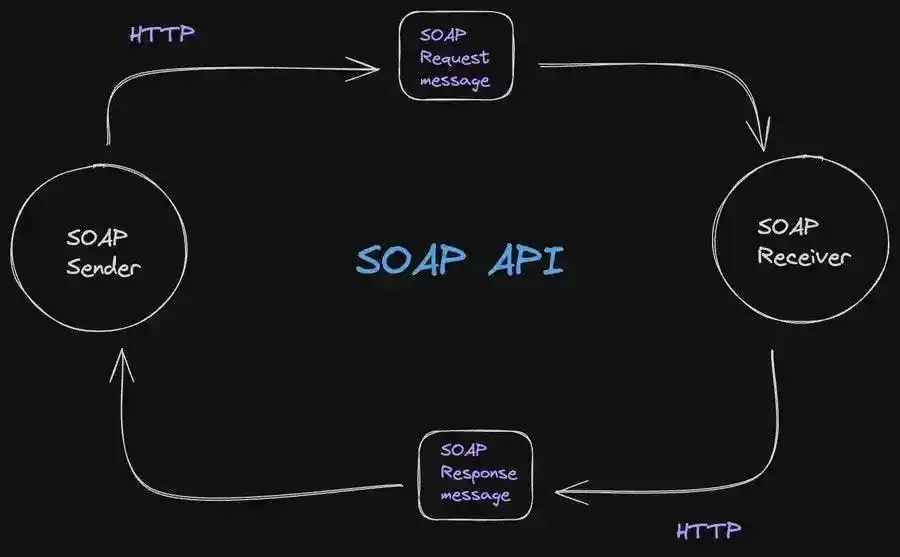REST API vs SOAP: Protocol Comparison for Web Services
Updated on : 12 April, 2025

Image Source: google.com
Table Of Contents
- 1. Introduction to Web Service Protocols
- 2. What is REST API?
- 3. What is SOAP?
- 4. Architecture Comparison
- 5. Data Format and Protocol Standards
- 6. Performance and Scalability
- 7. Security Features
- 8. Error Handling Mechanisms
- 9. Tooling and Developer Support
- 10. Key Differences Between REST and SOAP
- 11. Use Cases: When to Use REST or SOAP?
- 12. How Hexadecimal Software Can Help You Use REST and SOAP in Software Development
- 13. Frequently Asked Questions (FAQs)
- 14. Conclusion
Table Of Contents
Introduction to Web Service Protocols
In the evolving digital ecosystem, applications often need to interact across different platforms and services. This interaction is facilitated through web services, where REST (Representational State Transfer) and SOAP (Simple Object Access Protocol) are two dominant protocols.
Web service protocols allow:
- Communication between different systems, regardless of platform or programming language.
- Real-time data transfer for cloud apps, mobile applications, microservices, and more.

Image Source: google.com
What is REST API?
REST is an architectural style that leverages standard HTTP methods to access and manipulate web resources.
Key Features:
- Stateless Communication: Each call is independent; no session data is stored on the server.
- Resource-Based URLs: Operations performed on URLs (e.g.,
/api/products/23). - Lightweight Data Interchange: Primarily uses JSON, though XML or YAML can also be supported.
- HTTP Methods:
GET: Retrieve a resource.POST: Create a new resource.PUT: Update an existing resource.DELETE: Remove a resource.
Benefits:
- Simple to learn and implement.
- Faster than SOAP due to minimal overhead.
- Ideal for web and mobile applications.
What is SOAP?

Image Source: google.com
SOAP is a protocol developed by W3C that allows structured communication using XML over multiple transport protocols like HTTP, SMTP, or JMS.
Key Components:
- Envelope: Wraps the message structure.
- Header: Contains optional metadata.
- Body: Contains the actual message payload.
- Fault: Handles error messages.
Benefits:
- Built-in error handling and strict standards.
- Enterprise-grade security (WS-Security).
- Excellent for mission-critical applications like banking and telecom.
Web Application Development Services
Build fast, scalable, and secure web applications with robust REST or SOAP API integrations tailored to your business needs.
Architecture Comparison
| Feature | REST | SOAP |
|---|---|---|
| Type | Architectural style | Protocol |
| Interface Design | Resource-oriented | Operation-based |
| Standards | No formal standard | Strict WSDL and XML Schema |
| Scalability | High (ideal for microservices) | Moderate |
| Statefulness | Stateless | Can be stateless or stateful |

Need help integrating REST or SOAP APIs?
Data Format and Protocol Standards
Choosing the right data format is essential when selecting between REST and SOAP. While both enable communication between systems, they handle data differently, which impacts flexibility, integration effort, and performance.
- REST APIs are flexible, supporting a variety of data formats such as JSON, XML, YAML, and plain text. This allows developers to choose formats best suited for their application.
- SOAP is stricter and mandates the use of XML for message formatting. Although verbose, XML ensures structure and type safety, which is crucial in enterprise environments.
- JSON is the preferred format for REST, offering faster transmission and easier readability, especially in web and mobile apps.
- SOAP uses XML schemas, which ensure strict validation and interoperability with systems that require guaranteed message structure.
- REST’s loose structure makes it easier to integrate and debug, while SOAP’s rigid structure ensures reliability across critical systems.
📊 Comparison Table
| Feature | REST API | SOAP API |
|---|---|---|
| Supported Data Formats | JSON, XML, YAML, plain text (flexible) | XML only (strict) |
| Preferred Format | JSON (lightweight and easy to parse) | XML (more verbose and complex) |
| Schema Enforcement | Optional (looser validation) | Strict XML Schema-based validation |
| Message Verbosity | Lightweight messages | Verbose due to required XML envelope structure |
| Human Readability | High (especially with JSON) | Moderate (XML is readable but bulky) |
| Interoperability | High with modern web apps and mobile systems | High with legacy enterprise systems and strict specs |
Performance and Scalability
| Criteria | REST API | SOAP API |
|---|---|---|
| Performance | Faster due to lightweight JSON | Slower due to XML overhead |
| Scalability | Highly scalable (ideal for microservices) | Moderate scalability |
| Caching | Supports HTTP caching | No built-in caching support |
| Load Balancing | Easier with stateless architecture | More complex due to stateful options |
Security Features
Security is critical for modern APIs. Here's how REST and SOAP compare:
| Security Feature | REST API | SOAP API |
|---|---|---|
| Transport Security | Uses HTTPS for secure data transmission | Supports HTTPS and WS-Security for encrypted transport |
| Authentication | Uses OAuth 2.0, JWT, and API Keys | Uses Username/Password, SAML tokens, and WS-Security |
| Message-Level Security | Requires third-party libraries or custom implementation | Built-in via XML Encryption and Digital Signatures |
| Compliance | Suitable for most apps (e.g., mobile, SaaS) | Ideal for regulated industries like banking, healthcare, and telecom |
Error Handling Mechanisms
REST and SOAP handle errors differently:
-
REST:
- HTTP Status Codes:
400 Bad Request,401 Unauthorized,404 Not Found,500 Internal Server Error - Error details often included in JSON response body
- HTTP Status Codes:
-
SOAP:
Faultelement in response body- Structured with faultcode, faultstring, and detail
Backend Web Development Services
Build secure, high-performance backend systems that power scalable applications and integrate seamlessly with REST or SOAP APIs to ensure robust, enterprise-grade communication and data management.
Tooling and Developer Support
| Tool | REST | SOAP |
|---|---|---|
| API Documentation | Swagger (OpenAPI) | WSDL |
| Testing Tools | Postman, curl, Insomnia | SOAP UI, Wizdler |
| Browser Support | Easy to test with browser | Not directly supported |
| Learning Curve | Simple to learn | Requires understanding of XML, WSDL |
Key Differences Between REST and SOAP

Image Source: google.com
| Criteria | REST API | SOAP |
|---|---|---|
| Protocol Type | Architectural style | Strict protocol |
| Data Format | JSON, XML, plain text | XML only |
| Speed | Fast | Slower due to payload size |
| Security | OAuth, HTTPS | WS-Security, SAML |
| State Management | Stateless | Can be stateful |
| Complexity | Easy to learn | Complex to implement |
| Error Handling | HTTP status codes | Structured SOAP Fault |

Simplify your integration with expert REST and SOAP API development services.
Use Cases: When to Use REST or SOAP?
REST:
- Lightweight communication
- Mobile applications
- Public APIs and web services
- Cloud-based microservices
SOAP:
- High-security systems
- Legacy integrations
- Banking and insurance APIs
- Systems requiring ACID transactions
How Hexadecimal Software Can Help You Use REST and SOAP in Software Development
At Hexadecimal Software, we partner with startups, enterprises, and digital innovators to build robust, secure, and scalable systems using the right API protocols—REST for modern, lightweight applications and SOAP for enterprise-grade, standards-driven environments.
🔧 End-to-End API Development
We design, develop, and deploy RESTful and SOAP-based APIs tailored to your business logic, architecture, and scalability requirements.
🧠 Protocol Consultation & Architecture Design
Not sure whether to use REST or SOAP? We assess your project goals and recommend the right API architecture based on compliance, performance, and integration needs.
🔗 API Integration Services
We connect your systems with external platforms, SaaS tools, payment gateways, CRMs, and legacy SOAP services using secure and reliable integration pipelines.
🌐 Multi-Platform Support
Whether it’s a microservices setup using REST or a secure B2B interface with SOAP, we work across Node.js, Java, Spring Boot, .NET, Python, and more.
🛡️ Security Implementation
Our team ensures your APIs are protected using HTTPS, OAuth 2.0, API keys (REST) or WS-Security, SAML (SOAP), and best practices for secure transmission and authentication.
⚙️ Monitoring & Maintenance
We implement logging, monitoring, and API health checks using tools like Postman, Swagger, SOAP UI, and cloud monitoring solutions to ensure long-term reliability.
🚀 Connect With Us
Whether you're building a mobile-first platform with REST APIs or integrating mission-critical systems with SOAP, Hexadecimal Software ensures a secure, scalable, and future-proof API strategy—tailored to your tech stack and business needs.
💡 Ready to streamline your development workflow?
Let’s talk about building your ideal tech stack today.
Frequently Asked Questions (FAQs)
Q: What is the main difference between REST and SOAP?
A: REST is an architectural style that uses standard HTTP methods and supports multiple data formats like JSON, while SOAP is a strict protocol that only uses XML for communication.
Q: Is REST faster than SOAP?
A: Yes, REST is generally faster due to its lightweight nature and support for JSON, which is less verbose than XML.
Q: Which one is more secure: REST or SOAP?
A: SOAP has more built-in security features like WS-Security, making it better for enterprise-level applications. REST can also be secured using HTTPS, OAuth, and token-based authentication.
Q: Can REST and SOAP be used together?
A: Yes, it is possible to use both REST and SOAP in the same system depending on the requirements and services being integrated.
Q: Which is easier to use: REST or SOAP?
A: REST is generally easier to use and integrate, especially for web and mobile developers, due to its simplicity and use of HTTP and JSON.
Q: What are the use cases for SOAP?
A: SOAP is preferred in enterprise applications where formal contracts, security, and ACID-compliant transactions are required, such as banking or telecommunication services.
Q: What are the use cases for REST?
A: REST is widely used for web services, mobile app backends, public APIs, and modern microservices due to its simplicity and performance.
Q: Can SOAP services be consumed by modern web apps?
A: Yes, but it requires additional configuration and parsing since most modern frameworks are optimized for REST and JSON.
Q: Does REST support operations like SOAP's service contracts?
A: REST does not use formal contracts like WSDL in SOAP, but OpenAPI (Swagger) can be used to define API specifications in REST.
Q: Which one is more scalable?
A: REST is generally more scalable due to its stateless nature, making it suitable for distributed systems and microservices.
Conclusion
Choosing between REST and SOAP depends on your application’s needs:
- Go with REST for flexibility, speed, and modern architecture.
- Opt for SOAP for enterprise-level security, compliance, and structured contracts.
Hexadecimal Software is your trusted partner for building, integrating, and scaling robust API-driven systems tailored to your business needs.


